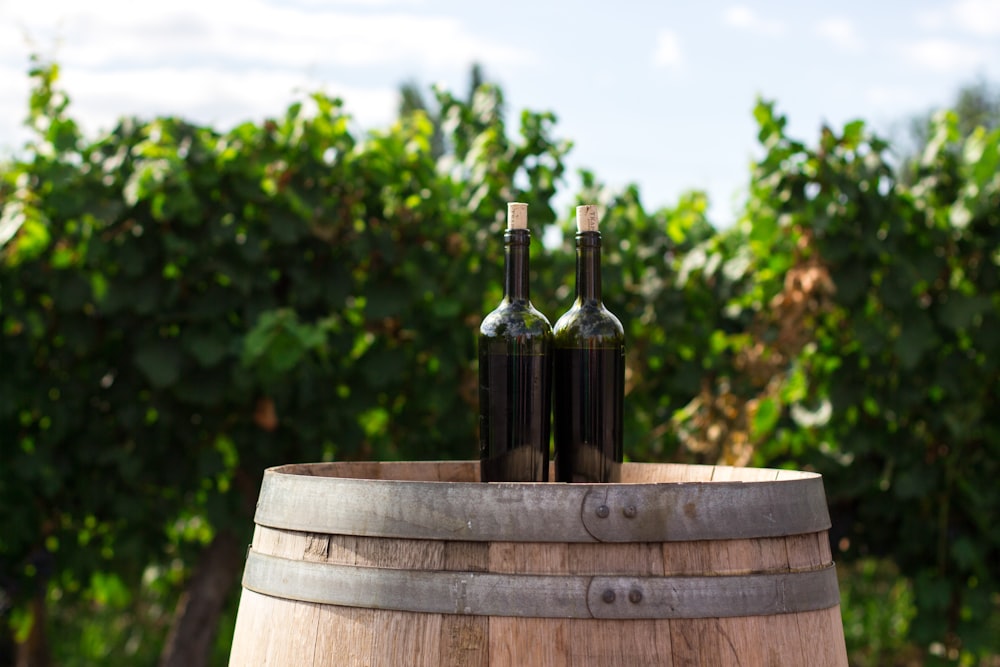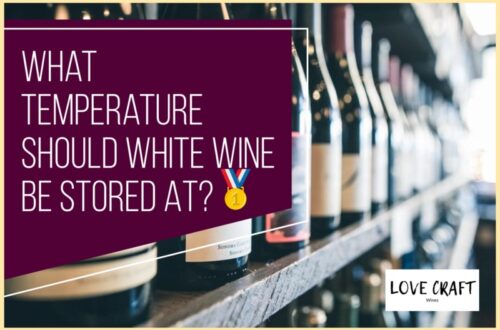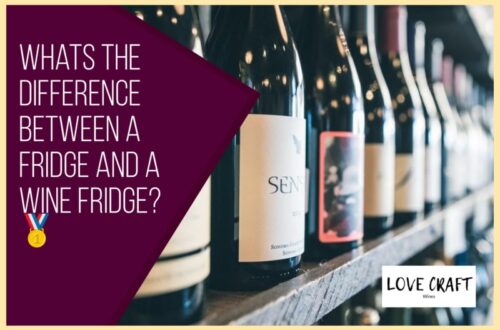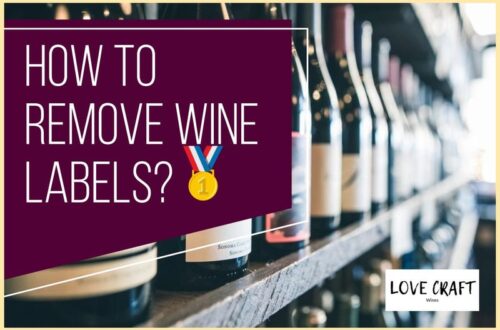Do you love a good glass of wine?
Have you ever wondered how it’s made?
The process of making wine is a complex and intricate one, involving multiple steps and careful attention to detail.
From harvesting the grapes to bottling the finished product, every step of the process plays a crucial role in the final taste and quality of the wine.
The process begins with the careful selection and harvesting of the grapes, followed by crushing and pressing to extract the juice.
Fermentation and aging then take place, allowing the wine to develop its unique flavor profile.
Finally, the wine is blended and bottled, ready to be enjoyed by wine enthusiasts around the world.
In this article, we will take a detailed look at each step of the process, giving you an inside view of the fascinating world of winemaking.
Table of Contents
Harvesting the Grapes
Now that we’ve got the grapes, it’s time to start turning them into the delicious nectar we know and love.
The first step in the process is harvesting the grapes. Grape varieties are carefully selected and grown to achieve the desired flavor profile of the wine. Once the grapes have reached their optimal ripeness, they are harvested using various techniques.
The harvesting method used can depend on the type of grape and the region in which they are grown. Some vineyards may choose to harvest by hand, which is a more traditional and labor-intensive method. Others may opt for mechanical harvesters, which can quickly and efficiently harvest large quantities of grapes.
Regardless of the method, it’s crucial to harvest the grapes at the right time to ensure the perfect balance of acidity and sweetness in the final product.
Now, let’s move on to crushing and pressing the grapes.
Crushing and Pressing the Grapes
As you stomp on the grapes, you can almost feel like you’re in ancient Rome, where this technique was first used to extract the precious juice. Of course, nowadays, most wineries use machines to crush and press the grapes, but traditional methods are still used in some parts of the world.
Grape quality is of utmost importance during this step. The winemaker must ensure that only the best grapes are used, and varietal selection is also important. The grapes are sorted and cleaned before being crushed, to ensure that only ripe, healthy grapes are used.
After being crushed, the juice is separated from the solids, which are used for compost or other purposes. The juice is then transferred to tanks for fermentation. This is where the magic really happens, as yeast converts the sugars in the juice into alcohol.
Fermentation can take anywhere from a few days to a few weeks, depending on the type of wine being made. Once fermentation is complete, the wine is aged in barrels or tanks to allow flavors to develop and mature.
Fermentation and Aging
Experience the magic of transforming grape juice into alcohol as yeast works its wonders during fermentation, a crucial step in the wine-making process. Wine chemistry plays a significant role in this process, as it determines the type of yeast strain used.
During fermentation, yeast feeds on the grape juice’s sugars, producing alcohol and carbon dioxide. The temperature and duration of fermentation can also impact the wine’s flavor and aroma, as well as its alcohol content.
After fermentation, the wine is left to age, a delicate yet essential process that develops and enhances the wine’s flavors. The wine is typically stored in oak barrels or stainless steel tanks, where it can age for months or even years.
During this time, the wine undergoes a series of chemical reactions that soften the tannins, increase the complexity of flavors, and create a smooth texture. The aging process can vary depending on the type of wine, with some wines requiring more aging than others.
Once the wine is ready, it is time to move onto the next step: blending and bottling.
Blending and Bottling
After the magic of fermentation and aging, it’s time to bring all the flavors together in a symphony of taste by blending and sealing them in bottles like a colorful bouquet of flowers.
First, wine filtration is done to remove any remaining sediments. The process is essential to achieve clarity and improve the overall taste of the wine. Typically, wine filtration uses a membrane made from cellulose fibers or ceramic materials. The filter removes particles that are larger than the membrane’s pores, leaving behind clear wine.
Next, corking techniques are used to seal the wine in bottles. Cork is the traditional material used in wine bottle closures, but alternative methods like screwcaps and synthetic corks are also becoming popular.
Corking requires precision to prevent any leaks and preserve the wine’s quality. Bottles are then labeled, and the wine is stored for an additional period to allow it to settle and mature before it’s ready for tasting and enjoyment.
Tasting and Enjoying the Wine
Now it’s time to savor the fruits of labor and relish the unique flavors and aromas that come from the perfect blend of ingredients and aging. Tasting wine is an art that requires a keen sense of smell and taste.
Before you taste the wine, you need to examine its appearance, color, and clarity. Swirl the wine in the glass to release its aromas, and then take a sniff. The aroma of wine can reveal a lot about its quality and character.
Next, take a sip and let the wine rest on your tongue. The taste should be smooth, balanced, and complex. Finally, swallow the wine and pay attention to the aftertaste. A good wine should have a pleasant and long-lasting finish.
Wine pairing is an important aspect of tasting and enjoying wine. It involves matching the wine with food that complements its flavor and enhances its taste. Different types of wine pair well with different types of food. For example, red wine pairs well with red meat and cheese, while white wine pairs well with fish and poultry.
It’s also essential to store wine properly to preserve its flavor and quality. Wine should be stored in a cool, dark, and humid place, away from direct sunlight and heat. The temperature should be between 45°F and 65°F, and the humidity should be around 70%.
Follow these tips, and you’ll be able to enjoy your wine at its best.
Frequently Asked Questions
How long does it take for a grape vine to mature and produce grapes for winemaking?
Growing grapevines for winemaking is a long-term investment. It typically takes up to three years for a newly planted grapevine to mature and start producing grapes.
However, it can take up to five years for the grapevine to reach full maturity and produce enough grapes for winemaking. Harvest season variability can also affect the timeline for wine production.
For instance, in cooler climates, the harvest season may be delayed, which can prolong the time it takes for grapevines to produce enough grapes for winemaking. Overall, grapevine cultivation requires patience and careful planning to ensure a successful harvest for winemaking.
Are there any specific techniques or tools used to determine the ideal time to harvest grapes for winemaking?
Harvesting grapes for winemaking is a delicate art that requires precision and expertise. It’s like fishing, where you want to catch the fish when it’s just the right size and not too big or too small.
Grape ripeness assessment is crucial in determining the ideal time for harvesting, as it influences the taste and quality of the wine. There are various harvesting tools used to determine grape ripeness, including refractometers, which measure sugar levels in the grapes, and colorimeters, which assess color and maturity.
These tools help winemakers make informed decisions about when to harvest their grapes, ensuring that the wine they produce is of the highest quality.
What factors can impact the flavor and quality of wine during the fermentation and aging process?
During fermentation and aging, climate conditions and the type of yeast strain used can have a significant impact on the taste and quality of the wine.
Temperature and humidity levels can affect how quickly the wine ferments and how much alcohol is produced.
Different yeast strains can also produce different flavors and aromas, which can greatly influence the final product.
It’s important for winemakers to carefully monitor and control these factors to ensure that the wine develops the desired characteristics and meets their quality standards.
How do winemakers ensure consistency in the taste and aroma of wine from batch to batch?
Imagine a symphony orchestra. Each musician plays a unique instrument, yet they all work together to create beautiful music.
The same can be said for winemaking. Every batch of grapes has its own unique characteristics, but winemakers strive for consistency in taste and aroma across all batches.
This is where quality control and sensory analysis come into play. Winemakers use various techniques, such as chemical analysis and sensory evaluation, to ensure that each batch meets their standards.
By carefully monitoring the fermentation and aging process and making adjustments as necessary, winemakers can create a consistent product that wine lovers will enjoy time and time again.
What is the typical timeline for a bottle of wine to go from harvesting the grapes to being available for purchase in stores?
The wine production timeline can vary depending on several factors that can affect grape quality during winemaking. Typically, it takes around 6-8 months from harvesting the grapes to bottling the wine, followed by several more months of aging before it is available for purchase in stores.
During this time, the grapes undergo various stages of fermentation, clarification, and aging in barrels or tanks. The duration of each step can vary depending on the desired style and quality of the final product.
Factors that can affect grape quality include weather patterns, soil conditions, and vineyard management practices. Winemakers must carefully monitor and adjust these factors to ensure that each batch of wine is consistent in taste and aroma.
Conclusion
Well done! You’ve learned about the intricate process of making wine. From harvesting the grapes to tasting and enjoying the final product, the journey of wine is a meticulous and detailed process.
But let’s be honest, it’s not just a process, it’s an art. It takes knowledge, skill, and passion to create a wine that can evoke emotions and transport you to a different time and place.
It’s no wonder that wine has been a beloved beverage for centuries. So the next time you take a sip of wine, remember the hard work and dedication that went into creating that bottle.
And let it evoke the emotions and transport you to a different time and place, just like the winemakers intended. Cheers!







